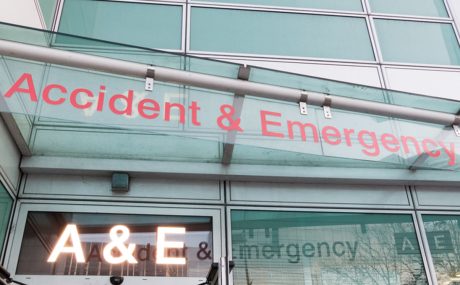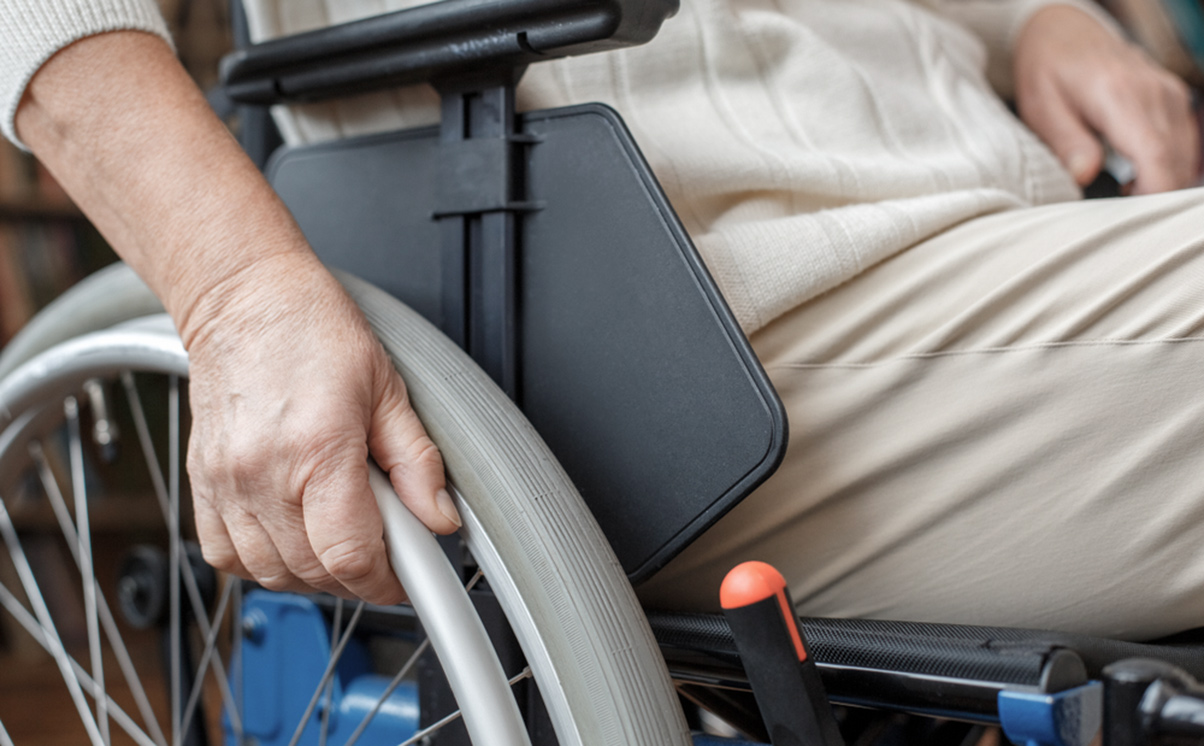The Supreme Court has unanimously upheld the appeal of the claimant and found that an A&E receptionist was negligent when she provided the claimant with misleading and incomplete information about A&E waiting times.
On 17 May 2010, a 26-year-old man, Michael Darnley, attended the Accident and Emergency Department of Croydon University Hospital having been assaulted. He thought he might have sustained a head injury. He was accompanied by his friend, Robert Tubman. He was booked in by the A&E receptionist at 8.26pm.
The receptionist told Mr Darnley he would have to wait for four to five hours to be seen. He waited for no longer than 19 minutes (this was a finding of fact made by the trial judge) and then decided to leave. In fact, he would have been seen by the triage team within 30 minutes of his arrival and from there, probably would have been treated quickly.
Mr Darnley had an extradural haematoma (a blood clot between the brain and the skull) and his condition deteriorated after he left the hospital. By the time he returned, he had brain damage. It was agreed by all parties to the claim that had he waited to be seen, he probably would have been treated in time to avoid any brain injury and would have made a full recovery.
The allegations of negligence
Mr Darnley’s case was that there was a negligent failure by the A&E receptionist to give him accurate information about waiting times, such that he decided to leave the hospital on the basis of false information. Had he known he would have been triaged more quickly, he would have waited to be seen.
Mr Darnley also argued that he should have been triaged within 15 minutes of arrival which means he would have been seen before he left after 19 minutes.
High Court decision
In relation to the second allegation, the trial judge, His Honour Judge Robinson, found that although a triage time target of 15 minutes for a patient with a head injury is the ideal (as per the NICE Guidelines), he was not prepared to find that a failure to meet that target by four minutes was a breach of duty. He was satisfied, on the basis of the expert evidence, that a longstop of 30 minutes was reasonable. Therefore, if Mr Darnley had not left the hospital, he would have been triaged within an appropriate timeframe.
Mr Darnley appealed this finding but the appeal was dismissed by the Court of Appeal. This point was not taken to the Supreme Court.
This article will focus on the first allegation: the duty of the A&E reception staff to give waiting time information.
In reaching his decision on the first allegation, HHJ Robinson relied on the principles established in the case of Caparo Industries PLC v Dickman [1990] 2 AC 605:
- foreseeability of harm;
- proximity; and
- whether it is fair, just and reasonable to impose liability for negligence.
The judge decided against Mr Darnley on both the second and third stages of the Caparo test; thus Mr Darnley lost his case at trial.
- HHJ Robinson concluded that it was reasonably foreseeable that patients who left A&E without being seen were at risk of harm. It was also reasonably foreseeable that a patient who believed it may be four or five hours before he would be seen may decide to leave without being assessed, whereas he would have stayed had he been aware that he would have been seen sooner by a triage nurse. (It is this finding that proved crucial in Mr Darnley’s successful appeal to the Supreme Court.)
- The judge answered the proximity test by posing the question that had been set out in Rahman v Arearose [2001] QB 351: from what kind of harm was it the defendant’s duty to guard the claimant? He ruled that receptionists in A&E are not under a duty to guard patients against harm caused by a failure to wait to be seen, even if such harm could have been prevented by the provision of full and accurate information about waiting times.
- Finally, the judge ruled that it would not be fair, just and reasonable to impose liability on the defendant for harm arising as a result of the failure by the receptionists to inform Mr Darnley of the likely waiting time to be seen by a triage nurse: “The provision of information concerning waiting times is a courtesy that is rightly afforded to patients, and long may that courtesy continue. However, it is going too far to impose liability in damages either for failure to provide the information or to provide information that is inaccurate…The imposition of such liability carries with it a risk, the magnitude of which I consider to be significant, that civilian reception staff, certainly in A&E departments…will simply be instructed not to do anything other than complete the registration forms.”
HHJ Robinson then went one step further by ruling that aside from the Caparo test, his conclusion could also be justified on the basis that the connection between the alleged inadequacies of the information provided and the harm was broken when Mr Darnley decided to leave. “It was the claimant who was aware that he had been struck over the head. He knew he was in pain. He knew that ultimately he would be seen. He took the decision to leave before he had been seen. Ultimately, it is the claimant who must take responsibility for the consequences of that decision, not the defendant by its reception staff.”
Mr Darnley appealed this decision.
Court of Appeal
The Court of Appeal rejected Mr Darnley’s appeal by a majority of 2:1.
Lord Justice Jackson also applied the Caparo principles when dismissing the appeal, stating that the inaccurate information given to Mr Darnley about waiting times was “not an actionable misstatement.” When the receptionist told Mr Darnley to wait in the waiting area, adding that he would have to wait for up to four or five hours, “she was not assuming responsibility to the claimant in the sense of accepting responsibility for the catastrophic consequences which he might suffer if he simply walked out of the hospital. Foreseeability alone is not sufficient to give rise to a duty of care.”
Jackson LJ also believed it was unfair to impose a duty on A&E receptionists not to give inaccurate information about waiting times as “this would add a new layer of responsibility to clerical staff and a new head of liability for NHS health trusts.”
Jackson LJ said he saw force in the High Court judge’s concerns that imposing such a duty would open the floodgates to litigation “about who said what to whom in A&E waiting rooms.”
Finally, Jackson LJ proceeded in the same vein as HHJ Robinson by saying that if he were wrong on the Caparo principles, the claim would still fail because Mr Darnley broke the connection when he left A&E “without telling the staff that he was about to leave.”
He, too, imposed personal responsibility on Mr Darnley: “There comes a point when people must accept responsibility for their own actions. The claimant was told to wait. He chose not to do so. Without informing anyone of his decision, he simply walked out of the hospital.”
Lord Justice Sales agreed with Jackson LJ but extended the public policy arguments by stating that if there were a duty on receptionists not to give inaccurate information to patients about waiting times, the duty could then be extended such that when the circumstances in A&E changed, for example if unexpected emergencies arose, thus pushing back the waiting time for other patients, the receptionists would be under a duty to provide updated information to waiting patients.
Dissenting judgment
Lord Justice McCombe dissented from his fellow judges. He took care to explain that, “circumspection has to be applied before a defendant NHS Trust is held responsible for inaccurate information communicated to patients on arrival at a hospital. It is only because of what I see to be the particular facts found by the judge…that I find (sadly) that the defendant was indeed in breach of a duty owed to the claimant. My conclusions are, in the modern jargon, ‘fact specific’.”
McCombe LJ relied on HHJ Robinson’s findings (made after hearing evidence from the two A&E receptionists, Mr Darnley and Mr Tubman and after observing that Mr Tubman was a compelling witness) that:
- Mr Darnley was not told that he would be seen by a triage nurse within 30 minutes.
- The receptionist knew there was a triage system and that patients with head injuries would be reviewed by a triage nurse.
- The only information given to Mr Darnley was that he would have to wait for up to five hours to be seen.
- If Mr Darnley had been told he would be seen within 30 minutes, he would have waited until he was seen. Mr Tubman would have been successful in persuading Mr Darnley to wait, even if Mr Darnley had said he wanted to go home.
Mr Tubman gave evidence to the court that the A&E receptionist “did not have a helpful attitude at all to Michael. She seemed more concerned as to how the injury had occurred and she asked Michael if the police had been involved.”
Mr Tubman explained that Mr Darnley told the receptionist that he had been hit on the head, he was in a lot of pain and he was worried that he had a head injury. She said that he would have to wait four or five hours to be seen and then she pulled the shutters down.
It is this evidence that led McCombe LJ to call this “a bad case”. Information imparted as per Mr Tubman’s description, “could only have given the claimant the impression that he would not be seen or assessed by anyone sooner…The information given was not only uncaring in tone,…it was also untrue.”
The fact that Mr Darnley was given misinformation is what led McCombe LJ to find: “In my judgment, it is the duty of the hospital not to provide misinformation to patients and that duty is not avoided by the misinformation having been provided by reception staff as opposed to medical staff.”
McCombe LJ did not believe that too great an onus would be placed on hospitals to give patients information about triage waiting times: “it would not have been beyond the hospital’s resources to tell patients such as this claimant, by way of leaflet if nothing else, that head injuries would normally be assessed initially by a trained member of medical staff within about 30 minutes.”
He concluded that the reality of the triage system should have been imparted to Mr Darnley and failure to do so was a breach of duty. Because HHJ Robinson had found as a fact that had this information been given, Mr Darnley would have waited, would have been seen within 30 minutes and would have been treated before he sustained any brain damage, McCombe LJ ruled that the breach of duty caused the injury and, therefore, Mr Darnley’s case should succeed.
Supreme Court
Lord Lloyd-Jones (with whom Lady Hale, Lord Reed, Lord Kerr and Lord Hodge agreed) delivered the judgment of the Supreme Court, overturning the decision of the Court of Appeal.
He said that the lower courts had been wrong to apply the Caparo principles in this case because the law “does not require a re-evaluation of whether those criteria are satisfied on every occasion on which an established category of duty is applied.” Jackson LJ had observed that to hold the Trust responsible would be to create “a new head of liability for NHS health trusts”. Lord Lloyd-Jones disagreed. He said that it has long been established that A&E departments owe a duty of care to those presenting themselves for medical treatment. The duty is one to take reasonable care not to cause physical injury to the patient (Barnett v Chelsea and Kensington Hospital Management Committee [1969] 1 QB 428). Mr Darnley’s case fell squarely within this established duty of care and, moreover, the duty not to cause physical injury extends to not providing misleading information which may foreseeably cause physical injury.
After finding that a duty of care does exist, Lord Lloyd-Jones went on to find that the duty of care is owed by the hospital trust and it is not appropriate to distinguish between medical and non-medical staff. He said he totally agreed with McCombe LJ who had said it is the duty of the NHS Trust to take care not to provide misinformation to patients and that duty is not avoided by the misinformation having been provided by reception staff as opposed to medical staff.
Although Lord Lloyd-Jones had said that this was not creating a new duty for NHS Trusts, he did go on to address the submissions that had been made on behalf of the Trust about the far-reaching and costly consequences imposing such a duty would have. The Court of Appeal had found force in these submissions. Lord Lloyd-Jones said that any undesirable consequences had been “considerably over-stated”. No one had suggested that A&E receptionists should have to provide accurate information on exactly when a patient would be seen by a medically qualified member of staff. “However, it is not unreasonable to require receptionists to take reasonable care not to provide misleading information as to the likely availability of medical assistance.”
Just as McCombe LJ had done in the Court of Appeal, Lord Lloyd-Jones turned to the specific facts of this case in order to find that the A&E receptionists had breached the duty of care owed to Mr Darnley. He observed: “The two receptionists on duty at the material time were both aware that the standard procedure was that anyone complaining of a head injury would be seen by a triage nurse and they accepted that the usual practice was that such a patient would be told that they would be seen by a triage nurse within 30 minutes of arrival…or as soon as possible. No reason has been suggested as to why [Mr Darnley] was not told of the standard procedure….It is not unreasonable to require that patients…should be provided on arrival, whether orally by a receptionist, by leaflet or prominent notice, with accurate information that they would normally be seen by a triage nurse within 30 minutes.”
Telling Mr Darnley that he would have to wait for up to four or five hours to see a doctor “was incomplete and misleading”. The Chief Executive of the Trust is said to have described this information in a letter to Mr Darnley in 2011 as “completely incorrect”. The trial judge made the critical finding that it was reasonably foreseeable that a person who believes that it may be four or five hours before he will be seen by a doctor may decide to leave. “In the light of that finding I have no doubt that the provision of such misleading information by a receptionist as to the time within which medical assistance might be available was negligent.”
Lord Lloyd-Jones then went on to assess causation and concluded, as McCombe LJ had done, that the findings of fact of the trial judge that (1) if Mr Darnley had been given accurate information, he would have waited and would have been seen before he collapsed; (2) Mr Darnley’s decision to leave was made, in part at least, on the inaccurate information given to him and (3) it was reasonably foreseeable that a person who believes that it may be four or five hours before he will be seen by a doctor may decide to leave, meant that the traditional test of causation was established.
In the Court of Appeal, Jackson LJ had concluded, in the alternative, that Mr Darnley’s decision to leave A&E without telling anyone broke the chain of causation and that Mr Darnley should accept responsibility for his own actions.
Lord Lloyd-Jones said that the findings of fact of the trial judge did not allow this to be made out but also, it was relevant that Mr Darnley had just sustained what was later found to be a very serious head injury.
Mr Darnley succeeded in full and his case was remitted to the High Court for an assessment of damages.
Conclusion
Following the Court of Appeal decision, NHS Resolution commented on its website as follows: “This was a sad case because the claimant suffered significant lasting injury. However, the claim was a novel one which we considered important to resist in the interests of the NHS. Roughly 100,000 patients visit A&E departments in England every week, so opening up receptionists to negligence claims of this kind would have had very serious consequences for the NHS.”
The Supreme Court did not consider the claim to be novel because it has long been established that hospitals owe a duty of care to patients presenting to A&E. On the facts of this case, the court found that in giving Mr Darnley misleading and incomplete information, for which no explanation could be offered, the A&E receptionists had breached this duty.
It seems unlikely that the Supreme Court judgment will have significant, far-reaching consequences for the NHS. At no point did the claimant advance a case for receptionists giving minute- or hour-perfect information to patients about how long they will have to wait before being seen by a medically trained member of staff. The evidence of the receptionists at trial was that their usual practice would be to say something along the lines of patients with head injuries being triaged within 30 minutes, or patients such as Mr Darnley being seen as soon as possible. Both of these were considered acceptable practice by the court and are likely to reflect the approach already taken by A&E departments across the country.
Once the court found that breach of duty was established, Mr Darnley succeeded on causation because the trial judge had found, as a fact, that if Mr Darnley had been given accurate information, he would have waited. He then would have been seen and treated before his collapse and, on the balance of probabilities, would have made a full recovery. Legally, the causal link was established and Mr Darnley did not break it when he decided to leave.
The comments in the lower courts about patients taking personal responsibility for their actions may reverberate through a legal culture moving towards patient autonomy. Lord Lloyd-Jones’ obiter comment that it was relevant that Mr Darnley had sustained what was later found to be a grave head injury suggests that future claimants in similar circumstances may be required to offer mitigation when defendants raise the challenge that their decision-making contributed to their injury.
You can find further information regarding our expertise, experience and team on our Clinical Negligence pages.
If you require assistance from our team, please contact us or request a call back from one of our lawyers by submitting this form.
Subscribe – In order to receive our news straight to your inbox, subscribe here. Our newsletters are sent no more than once a month.




